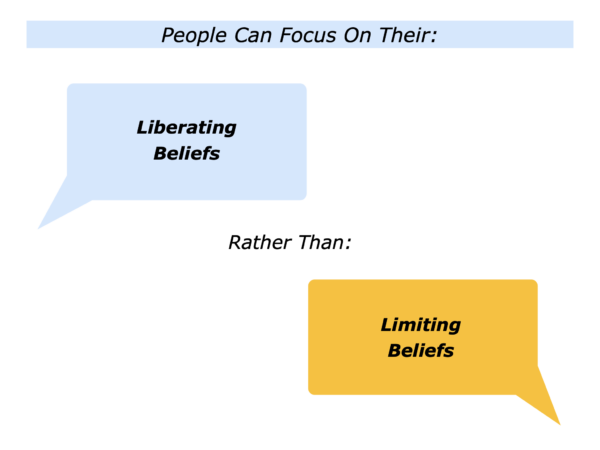
People can focus on their liberating beliefs. They can then translate these into action and aim to do their best.
Some psychologists urge people to focus on their so-called limiting beliefs, but taking this route can increase people’s self-doubt.
Another approach is for people to focus on their liberating beliefs. Such beliefs need to be based on reality, of course, rather than wishful thinking. Bearing this in mind, people often go through the following steps to clarify their liberating beliefs.
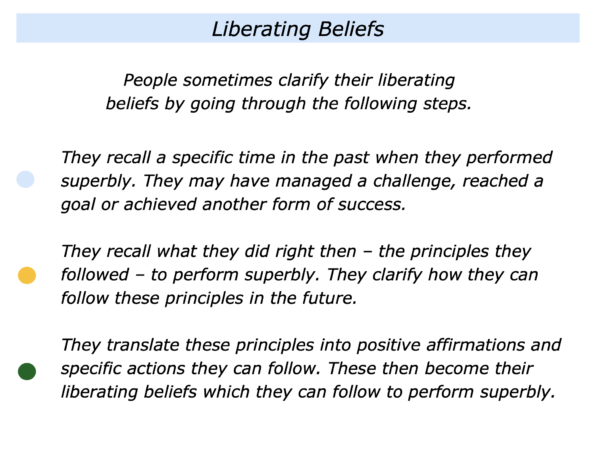
Looking back at your life, when have you pursued a liberating belief that enabled you to reach a goal? You may have done this when working to pass an exam, deliver a project or reach some other goal.
What was the belief you followed? How did you translate this into action? Different people do this in different ways. A person may say, for example:
“I can do it. I have done it before, so I can do it again. I just need to keep doing certain things in the right way. I will then reach the goal.”
If you wish, try tackling the exercise on this theme. This invites you to do the following things.
Describe a specific situation in the past when you followed a liberating belief.
Describe the specific things you did then to translate this belief into action.
Describe the specific things that happened as a result of taking these steps.
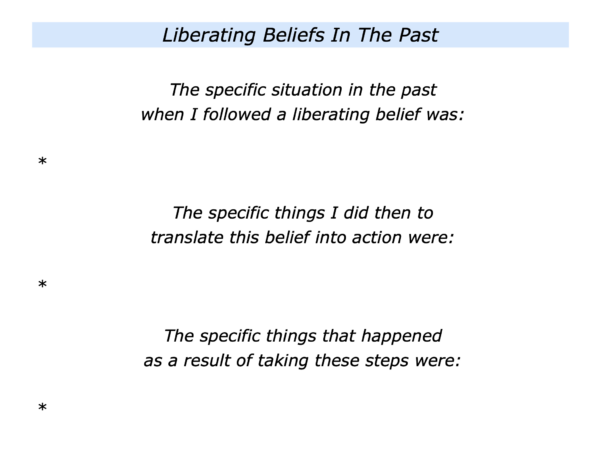
Different people choose different ways to apply this approach. The key is that they must believe in pursuing their chosen path. How to make this happen? Here are two of the most common approaches.
The Positive History Approach
As mentioned before, this approach invites a person to recall times when they have managed a similar situation successfully. It is to clarify the principles they followed and how they translated these into action.
Looking ahead, they can explore how they can follow these principles – plus maybe add other skills – in the future. They can then rehearse this approach and translate it into action to achieve peak performance.
People are often emotionally driven. If they have done something before, they are more likely to believe they can do it again.
The Appreciative Inquiry Approach
There are many models for helping people, teams and organisations to develop. Appreciative Inquiry is one of the most effective and is based on what works.
AI studies humanity at its best. Bearing in mind the challenge that people want to explore, they are invited to learn from their positive history. Here is an introduction to this approach.
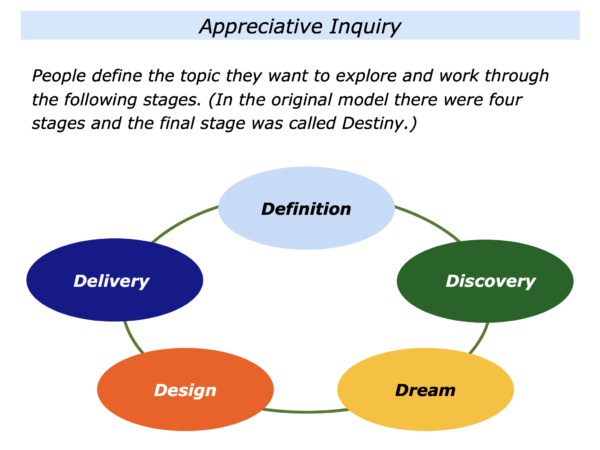
Definition
The approach starts by people defining the question to explore. It is also important to frame this in a positive way. For example:
How can we combine our strengths to do superb work? How can we be resilient when tackling a specific challenge? How can we keep developing after achieving a success?
Discovery
This involves people discovering when they have performed superbly in this area. When did they tackle a similar challenge successfully? What were the principles we followed? How did they translate these into action?
Dream
This involves people following these principles and translating them into setting a desirable goal. It is important that the goal is stimulating, stretching and will help them to achieve success.
Design
This involves people designing the strategies for achieving the goal. It is important for them to use their strengths, follow these chosen principles and do what is necessary to increase the likelihood of achieving success.
Delivery
This involves people following their chosen strategies, performing superb work and continually improving. They encourage each other on the journey and do their best to deliver the desirable goal.
Appreciative Inquiry embodies people’s liberating beliefs. It builds on what they know works. They translate these principles into action and deliver success.
Let’s return to your own life and work. Looking to the future, can you think of a situation when you may want to follow a liberating belief? You may want to do this when taking the next step in your career, tackling a specific challenge or whatever.
What is the liberating belief you would like to follow? How can you translate this into action? What may happen as a result of taking these steps?
If you wish, try tackling the exercise on this theme. This invites you to complete the following sentences.
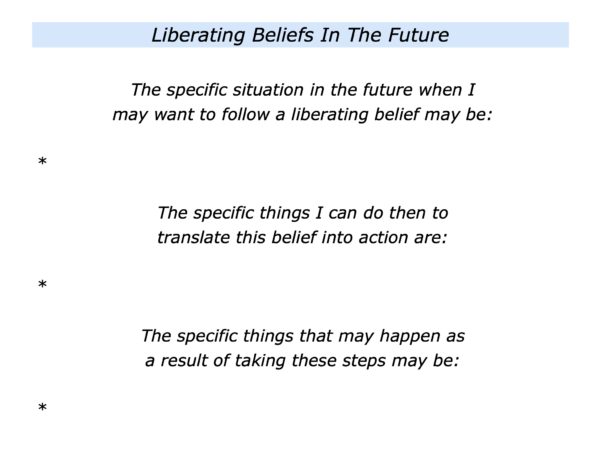






Leave a Reply